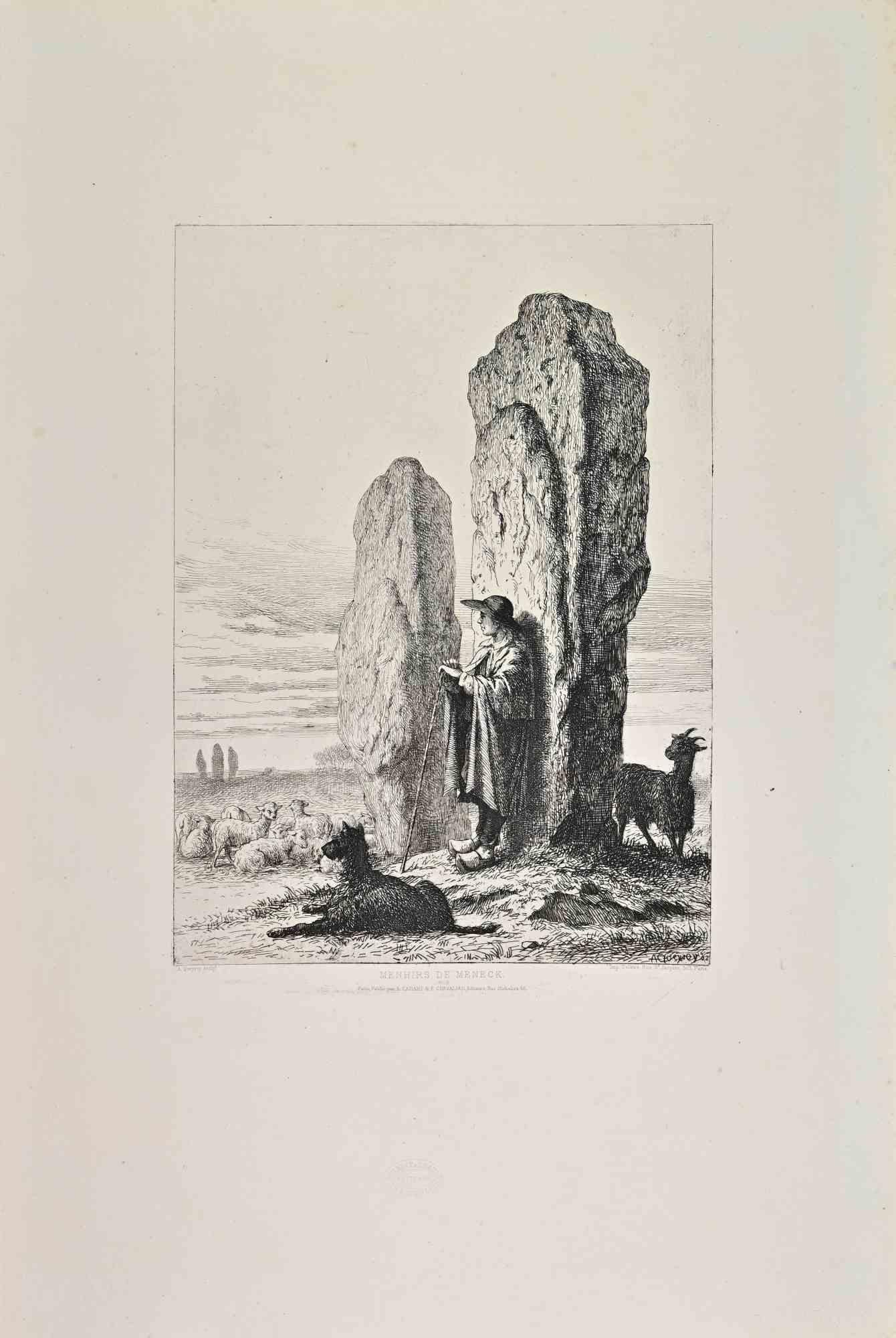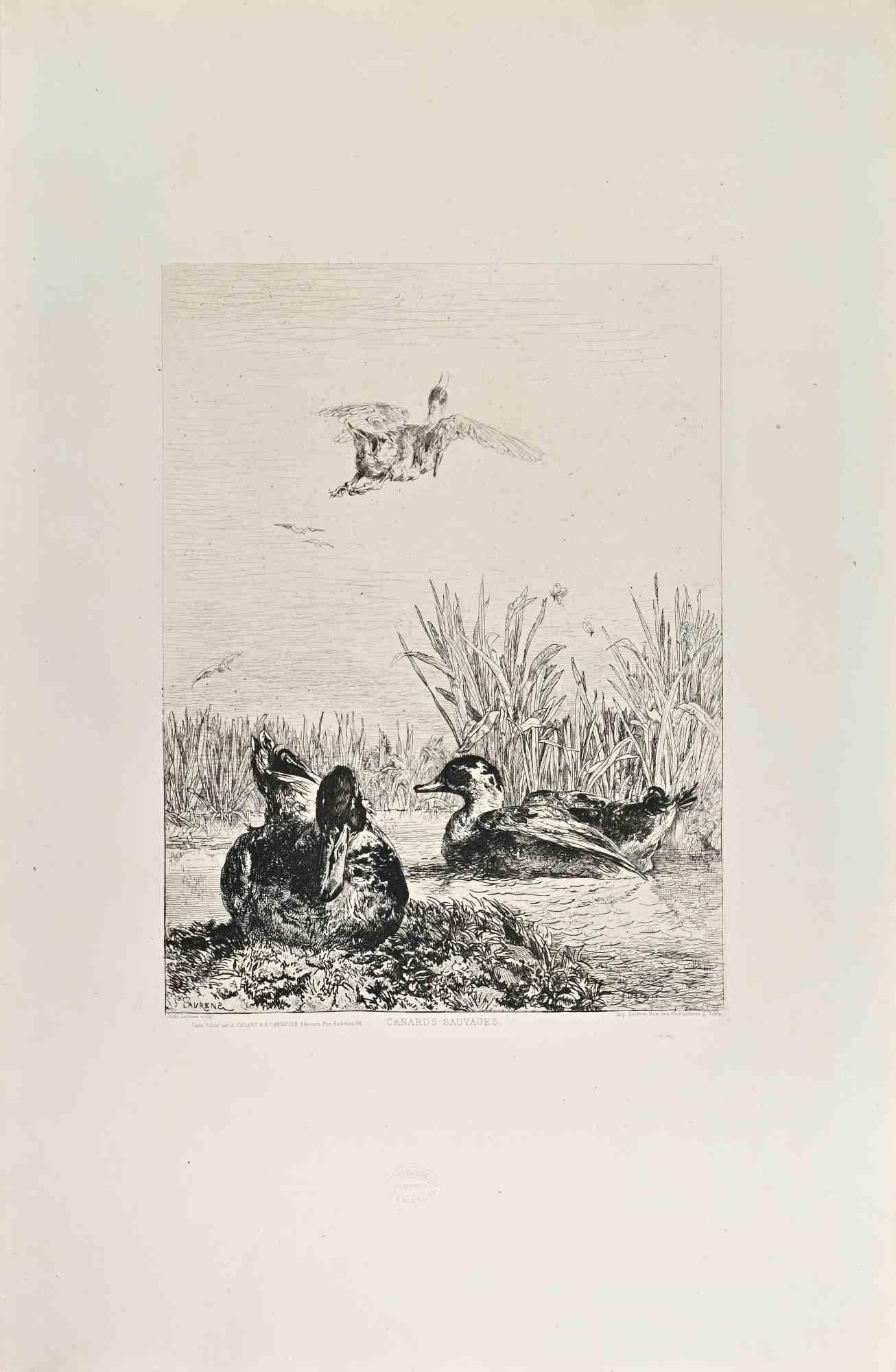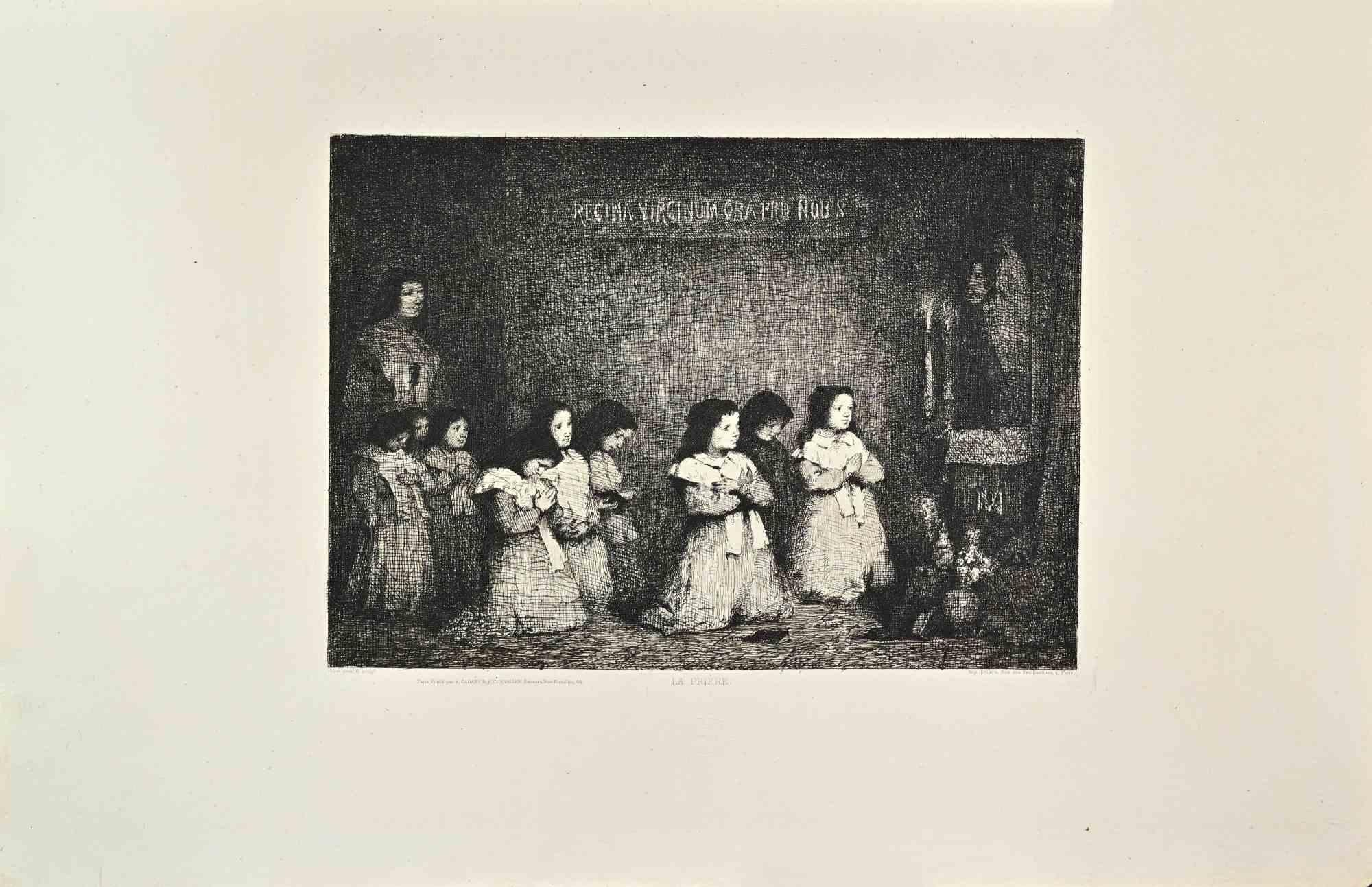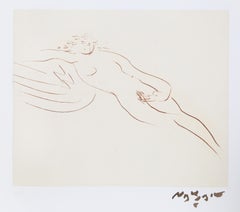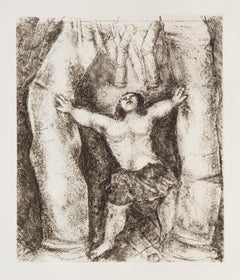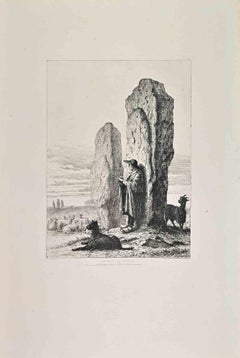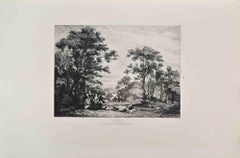Raoul DufyWomen Mingling, Impressionist Etching by Raoul Dufyc 1920
c 1920
About the Item
- Creator:Raoul Dufy (1877-1953, French)
- Creation Year:c 1920
- Dimensions:Height: 13 in (33.02 cm)Width: 10 in (25.4 cm)
- Medium:
- Movement & Style:
- Period:
- Framing:Framing Options Available
- Condition:
- Gallery Location:Long Island City, NY
- Reference Number:Seller: 829991stDibs: LU46614654782
Raoul Dufy
Raoul Dufy was a renowned French Fauvist painter, famous for his colorful, decorative designs. He was born in Le Havre, Normandy, in 1877. Dufy had a simple upbringing, leaving school at 14 to work at a Brazilian coffee-importing company. His formal artistic education began when he was eighteen at Le Havre's École des Beaux-Arts, where he took evening art classes. He continued to paint within the purlieu of Le Havre and was greatly inspired by the Impressionist landscape painters Claude Monet and Camille Pissarro. In 1900, after serving in the military for one year, Dufy won a scholarship to the École Nationale Supérieure des Beaux-Arts in Paris.
Dufy began painting watercolors of the Norman landscapes but was soon widely celebrated for his brightly colored and bold contoured paintings – in dialogue with the Fauvist style. He remained faithful to Fauvism until Paul Cézanne’s work guided him to embrace a subtler aesthetic. This new mode of sobriety saw his work return to a lighter style, which he celebrated through rapid inscription-like drawings over vivid backgrounds of color washes.
The rise of Cubism in Paris during the first two decades of the 20th century influenced him to develop a systematic approach that was later known as stenographics. Using this he experimented with foreshortened perspective, thin washes of paint and skeletal structures. In this style, he portrayed the lavish scenes of the French Riviera, leisureliness of the period, and chic revelries. Dufy was also fascinated by other amusements such as regattas, horse races and concerts and loved to depict the excitement and commotion of the crowds.
Dufy had his first exhibition in 1901 at the Salon des Artistes Français, following a string of exhibitions over the following years. In 1906 he took part in the Cercle de l’Art Moderne Exhibition in Le Havre with artists Georges Braque, Henri Matisse and Henri Charles Manguin. Dufy was given his first retrospective in 1921 at the Galerie Bernheim-Jeune and in 1932 his first painting was accepted into a national collection. He celebrated two large commissions for the 1937 Exposition Internationals des Artes et Techniques dans la Vie Moderne. The most notable of the two was the adornment for the Pavilion of Light and Electricity. He was commissioned with the task to illustrate the history of electricity from the classical era to its current position in 20th century developments. He painted La Fée électricité, a huge fresco which was donated to the Musée d’Art Moderne in 1964. In 1952 he represented France at the 26th Venice Biennale, where he won the Gran Premio. A year later he died aged 75, of polyarthritis, an illness he had been suffering from since 1937.
Find authentic Raoul Dufy prints, paintings and other art on 1stDibs.
(Biography provided by Stern Pissarro Gallery)
- ShippingRetrieving quote...Shipping from: Long Island City, NY
- Return Policy
More From This Seller
View AllEarly 1900s Impressionist Figurative Prints
Etching, Aquatint
1970s Impressionist Figurative Prints
Etching
Early 1900s Impressionist Figurative Prints
Etching, Aquatint
1950s Impressionist Figurative Prints
Etching
1950s Impressionist Figurative Prints
Etching, Aquatint
Early 1900s Impressionist Figurative Prints
Etching, Aquatint
You May Also Like
1860s Impressionist Figurative Prints
Etching
Late 19th Century Impressionist Figurative Prints
Etching
Late 19th Century Impressionist Figurative Prints
Etching
Early 2000s Impressionist Portrait Prints
Etching, Aquatint
Late 19th Century Impressionist Figurative Prints
Etching
1860s Impressionist Figurative Prints
Etching
Recently Viewed
View AllRead More
Romare Bearden’s Humanity Infuses His Bright, Bold Art
Through collage, painting and printmaking, the artist foregrounded Black life in America in revolutionary new ways.
Chryssa’s 1962 Neon Sculpture Was Way ahead of the Art-World Curve
By working with lettering, neon and Pop imagery, Chryssa pioneered several postmodern themes at a time when most male artists detested commercial mediums.

